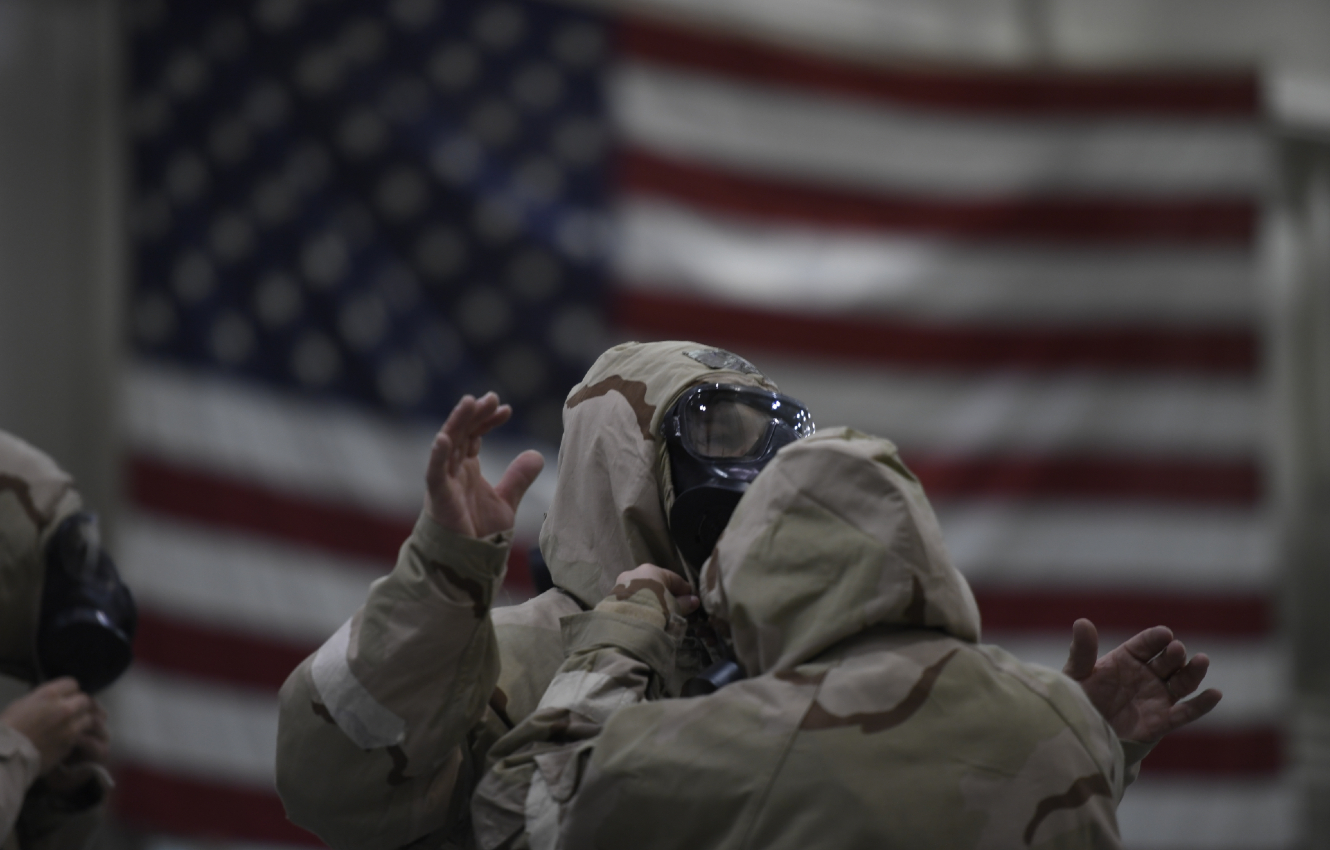Posted for fair use.....
Issue No. 457 April 27, 2020
In Defense of Deterrence
Michael Rühle
Michael Rühle is Head, Hybrid Challenges and Energy Security, in NATO’s Emerging Security Challenges Division.
The views expressed are the author’s own.
Introduction: The Appeal of Deterrence
The concept of deterrence is congenial to Western democracies. As Lawrence Freedman put it, deterrence strategies “appeal to governments because they can be presented as being defensive but not weak, and firm but not reckless.”[1] Deterrence implies that one can keep unwelcome developments at bay by remaining essentially passive: the mere show of force can substitute for military action. Military deterrence is essentially a status quo concept. It does not rule out political, social or economic change, nor does it rule out competition between states. However, it seeks to prevent an opponent from using force to achieve its antagonistic political aims, thus making major war less likely. To be sure, the concept has its share of logical inconsistencies and moral dilemmas. When effective, however, its gains far outweigh its costs.
An Anxious Re-Birth
As the international environment is characterized by increased competition, the concept of deterrence, after over two decades of having received scant attention in the West, has re-entered the strategic lexicon. However, this return of deterrence is burdened with a range of problems. On the nuclear level in particular, an international NGO-led effort seeks to de-legitimize the very concept that appears to have contributed to the “long peace” between the world’s major powers. Arguing that nuclear deterrence is a myth, or that the system is too prone to failure, supporters of the Nuclear Ban Treaty and of nuclear disamament in general fundamentally challenge the tenets of established nuclear governance. The Ban Treaty will not lead to nuclear disarmament, nor will it spell the end of nuclear deterrence. However, it will seriously complicate the deterrence policies of, and nuclear cooperation among, Western democracies. By contrast, authoritarian “managed democracies” (V. Putin) will not take it seriously as a policy to follow.
Other familiar criticisms of deterrence focus on the difficulty of proving the concept’s effectiveness; the ethical and moral tension between the mere threat of military reprisals and their actual implementation; and the risk that it locks its protagonists into a permanent adversarial relationship. According to deterrence critics, by interpreting an adversary’s policies and postures as a threat that requires a resolute response, both sides are condemned to think in “worst case” and “action-reaction” categories, and thus remain unable or unwilling to explore pathways to overcome their hostility.
The end of the Cold War revealed the shaky intellectual foundations of such simplistic action-reaction models. The considerable military downsizing that followed the easing of East-West tensions brought home that once political relations change, so do force levels and postures. Many deterrence critics had misled themselves and others by their “negative militarism”, i.e. by their belief that in order to change political relationships one first had to change military strategies and force levels. The actual historical evidence suggests that significantly reducing force levels could only follow changed political relations.
Deterrence critics again confused cause and effect when they tried to give intellectual credibility to the goal of nuclear disarmament, such as President Obama’s “Prague agenda.” This agenda was bound to fail for numerous reasons, yet in their desire to make it work, many analysts-turned-advocates employed rather tortuous arguments. Some compared abolishing nuclear weapons to abolishing slavery or even to kicking the habit of smoking. Others tried to prove that nuclear deterrence was a myth, even though their arguments often defied common sense.[2] Still others admitted that achieving a nuclear-free world “would require a fundamental change in geopolitics,”[3] yet some tried to create the impression that restructuring international relations was just a matter of sufficient “political will.” Put simply, in the context of the Prague agenda, many deterrence researchers were willing to suspend serious research in favor of anti-nuclear activism. In the end, however, the familiar international system and related need for deterrence proved more durable than these critics advertised.
A New Wave of Deterrence Research
However, it is not only the critics of deterrence, but also some of its supporters, that are making it hard to give that concept its rightful, reasonable place. As the international environment is growing more complex, with a increasing number of actors using an ever-broader array of tools to compete, much attention is now being focused on how to apply deterrence to non-traditional, non-kinetic, or hybrid threats. Of course, there is no a priori reason why deterrence could not be applied to the non-military realm. After all, deterrence is a psychological concept that permeates all human activity, from education to criminal law. However, this emerging new research, which labels itself a new – fifth – “wave” in that field,[4] stretches that concept beyond recognition.
The new research acknowledges that deterring non-kinetic, non-existential and sometimes non-attributable actions is far more complex than deterring an adversary’s military action. Yet it argues that to deter an adversary from causing harm, the West does indeed have a considerable array of tools available: economic sanctions, freezing financial assets, cyber(counter)attacks, publicly naming and shaming the adversary for his malign actions, expelling dipomats, or closing legal gaps in order to deter illicit activities, to name but a few. These tools, if properly orchestrated, should provide Western nations with a rich menu of options for deterrence by punishment as well as by denial.[5] Others argue that in a world characterized by hybrid threats the punitive aspect of classical deterrence theory is becoming less relevant. Instead, much greater attention should be devoted to the study of incentives, i.e. how to encourage with incentives an adversary to do what one wants it to do.[6] In short, the “fifth wave” contends that the concept of deterrence can be adapted to reach far beyond existential military contingencies and military threats.
Analytical Confusion
The intellectual effort devoted to this new deterrence research is impressive. However, as with probably every “new” research field, it tends to overestimate its own relevance. For example, simply listing the actions that one might be ble to apply to cope with a hybrid adversary does not turn them into reality or even suggest if or when they could credibly contribute to deterrence: in non-existential contingencies, governments simply may not wish to make good on previously made deterrence threats, since this may be perceived as incurring other, and possibly much higher, political or economic costs. After all, unlike traditional military deterrence, where the adversaries’ militaries stay away from each other, this new (“modern”) deterrence, which is supposed to stretch across the cyber, economic and social domains, takes place in precisely those areas in which the adversaries are most closely entangled. Moreover, much of this research seems to proceed from the assumption that once an attacker is exposed, it will stop attacking. This is optimistic at best: exercises seem to reveal that most of the “softer” tools do not stop a determined aggressor. In short, the inherent assumption that a smaller, non-military challenge can somehow be deterred by an equally small non-military threat, as long as that threat is smartly “tailored,” is likely to be proven wrong by the harsh reality of warfare in the grey zone.
And there is more. Among the most important findings of traditional deterrence research was that one had to look not only at the opponent’s capabilities, but also at its interests, and that an opponent’s actions could well be the (inadvertent) consequences of one’s own. In other words, both sides interact on many levels. By contrast, the debate on deterring non-kinetic, hybrid threats thus far remains a one-way street: it postulates malign actors that seek to maximize harm on the West while minimizing cost to themselves. By acting in a grey zone that the West finds much harder to utilize for advancing its own strategic interests, and by using many tools that are off-limits to Western democracies, these adversaries appear even more ruthless and risk-prone than the opponents the West faced during the Cold War.
Continued.....
Issue No. 457 April 27, 2020
In Defense of Deterrence
Michael Rühle
Michael Rühle is Head, Hybrid Challenges and Energy Security, in NATO’s Emerging Security Challenges Division.
The views expressed are the author’s own.
Introduction: The Appeal of Deterrence
The concept of deterrence is congenial to Western democracies. As Lawrence Freedman put it, deterrence strategies “appeal to governments because they can be presented as being defensive but not weak, and firm but not reckless.”[1] Deterrence implies that one can keep unwelcome developments at bay by remaining essentially passive: the mere show of force can substitute for military action. Military deterrence is essentially a status quo concept. It does not rule out political, social or economic change, nor does it rule out competition between states. However, it seeks to prevent an opponent from using force to achieve its antagonistic political aims, thus making major war less likely. To be sure, the concept has its share of logical inconsistencies and moral dilemmas. When effective, however, its gains far outweigh its costs.
An Anxious Re-Birth
As the international environment is characterized by increased competition, the concept of deterrence, after over two decades of having received scant attention in the West, has re-entered the strategic lexicon. However, this return of deterrence is burdened with a range of problems. On the nuclear level in particular, an international NGO-led effort seeks to de-legitimize the very concept that appears to have contributed to the “long peace” between the world’s major powers. Arguing that nuclear deterrence is a myth, or that the system is too prone to failure, supporters of the Nuclear Ban Treaty and of nuclear disamament in general fundamentally challenge the tenets of established nuclear governance. The Ban Treaty will not lead to nuclear disarmament, nor will it spell the end of nuclear deterrence. However, it will seriously complicate the deterrence policies of, and nuclear cooperation among, Western democracies. By contrast, authoritarian “managed democracies” (V. Putin) will not take it seriously as a policy to follow.
Other familiar criticisms of deterrence focus on the difficulty of proving the concept’s effectiveness; the ethical and moral tension between the mere threat of military reprisals and their actual implementation; and the risk that it locks its protagonists into a permanent adversarial relationship. According to deterrence critics, by interpreting an adversary’s policies and postures as a threat that requires a resolute response, both sides are condemned to think in “worst case” and “action-reaction” categories, and thus remain unable or unwilling to explore pathways to overcome their hostility.
The end of the Cold War revealed the shaky intellectual foundations of such simplistic action-reaction models. The considerable military downsizing that followed the easing of East-West tensions brought home that once political relations change, so do force levels and postures. Many deterrence critics had misled themselves and others by their “negative militarism”, i.e. by their belief that in order to change political relationships one first had to change military strategies and force levels. The actual historical evidence suggests that significantly reducing force levels could only follow changed political relations.
Deterrence critics again confused cause and effect when they tried to give intellectual credibility to the goal of nuclear disarmament, such as President Obama’s “Prague agenda.” This agenda was bound to fail for numerous reasons, yet in their desire to make it work, many analysts-turned-advocates employed rather tortuous arguments. Some compared abolishing nuclear weapons to abolishing slavery or even to kicking the habit of smoking. Others tried to prove that nuclear deterrence was a myth, even though their arguments often defied common sense.[2] Still others admitted that achieving a nuclear-free world “would require a fundamental change in geopolitics,”[3] yet some tried to create the impression that restructuring international relations was just a matter of sufficient “political will.” Put simply, in the context of the Prague agenda, many deterrence researchers were willing to suspend serious research in favor of anti-nuclear activism. In the end, however, the familiar international system and related need for deterrence proved more durable than these critics advertised.
A New Wave of Deterrence Research
However, it is not only the critics of deterrence, but also some of its supporters, that are making it hard to give that concept its rightful, reasonable place. As the international environment is growing more complex, with a increasing number of actors using an ever-broader array of tools to compete, much attention is now being focused on how to apply deterrence to non-traditional, non-kinetic, or hybrid threats. Of course, there is no a priori reason why deterrence could not be applied to the non-military realm. After all, deterrence is a psychological concept that permeates all human activity, from education to criminal law. However, this emerging new research, which labels itself a new – fifth – “wave” in that field,[4] stretches that concept beyond recognition.
The new research acknowledges that deterring non-kinetic, non-existential and sometimes non-attributable actions is far more complex than deterring an adversary’s military action. Yet it argues that to deter an adversary from causing harm, the West does indeed have a considerable array of tools available: economic sanctions, freezing financial assets, cyber(counter)attacks, publicly naming and shaming the adversary for his malign actions, expelling dipomats, or closing legal gaps in order to deter illicit activities, to name but a few. These tools, if properly orchestrated, should provide Western nations with a rich menu of options for deterrence by punishment as well as by denial.[5] Others argue that in a world characterized by hybrid threats the punitive aspect of classical deterrence theory is becoming less relevant. Instead, much greater attention should be devoted to the study of incentives, i.e. how to encourage with incentives an adversary to do what one wants it to do.[6] In short, the “fifth wave” contends that the concept of deterrence can be adapted to reach far beyond existential military contingencies and military threats.
Analytical Confusion
The intellectual effort devoted to this new deterrence research is impressive. However, as with probably every “new” research field, it tends to overestimate its own relevance. For example, simply listing the actions that one might be ble to apply to cope with a hybrid adversary does not turn them into reality or even suggest if or when they could credibly contribute to deterrence: in non-existential contingencies, governments simply may not wish to make good on previously made deterrence threats, since this may be perceived as incurring other, and possibly much higher, political or economic costs. After all, unlike traditional military deterrence, where the adversaries’ militaries stay away from each other, this new (“modern”) deterrence, which is supposed to stretch across the cyber, economic and social domains, takes place in precisely those areas in which the adversaries are most closely entangled. Moreover, much of this research seems to proceed from the assumption that once an attacker is exposed, it will stop attacking. This is optimistic at best: exercises seem to reveal that most of the “softer” tools do not stop a determined aggressor. In short, the inherent assumption that a smaller, non-military challenge can somehow be deterred by an equally small non-military threat, as long as that threat is smartly “tailored,” is likely to be proven wrong by the harsh reality of warfare in the grey zone.
And there is more. Among the most important findings of traditional deterrence research was that one had to look not only at the opponent’s capabilities, but also at its interests, and that an opponent’s actions could well be the (inadvertent) consequences of one’s own. In other words, both sides interact on many levels. By contrast, the debate on deterring non-kinetic, hybrid threats thus far remains a one-way street: it postulates malign actors that seek to maximize harm on the West while minimizing cost to themselves. By acting in a grey zone that the West finds much harder to utilize for advancing its own strategic interests, and by using many tools that are off-limits to Western democracies, these adversaries appear even more ruthless and risk-prone than the opponents the West faced during the Cold War.
Continued.....

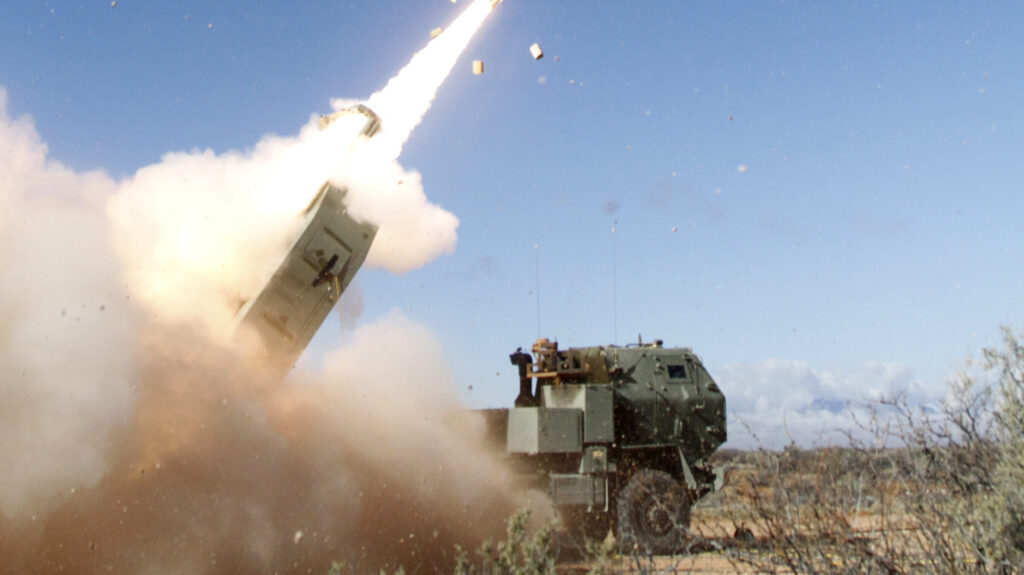
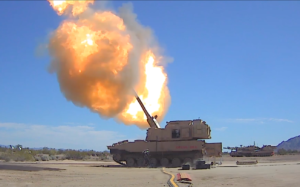
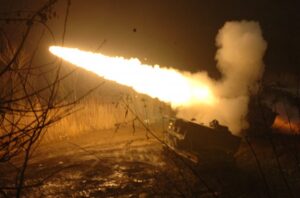

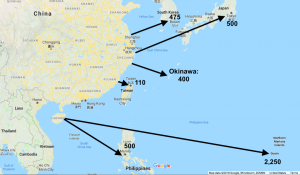


.webp)




